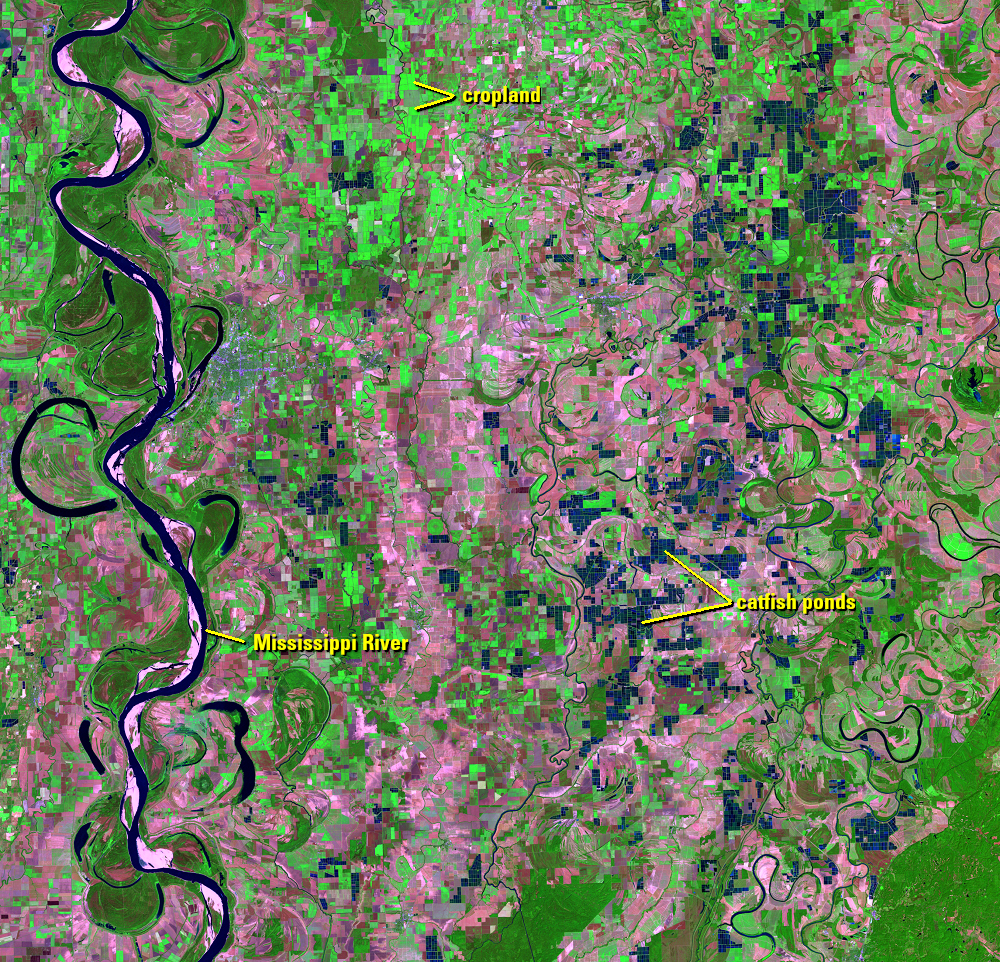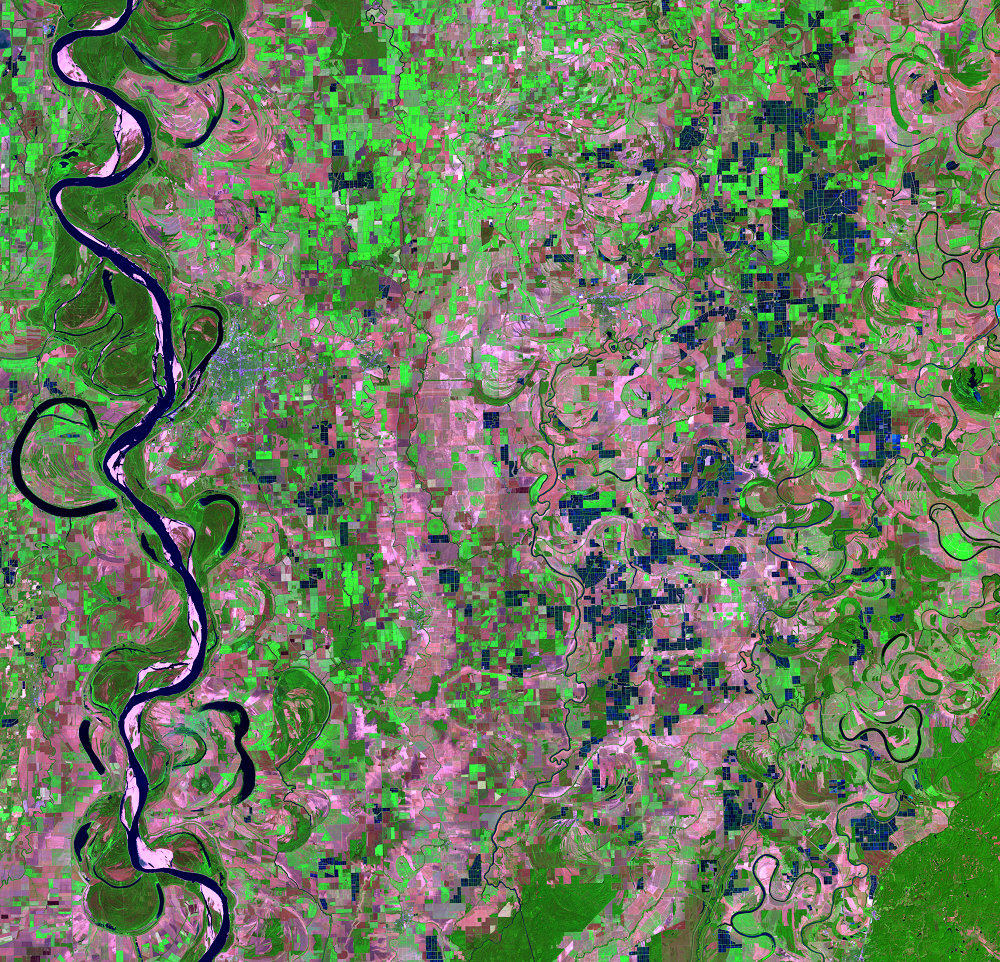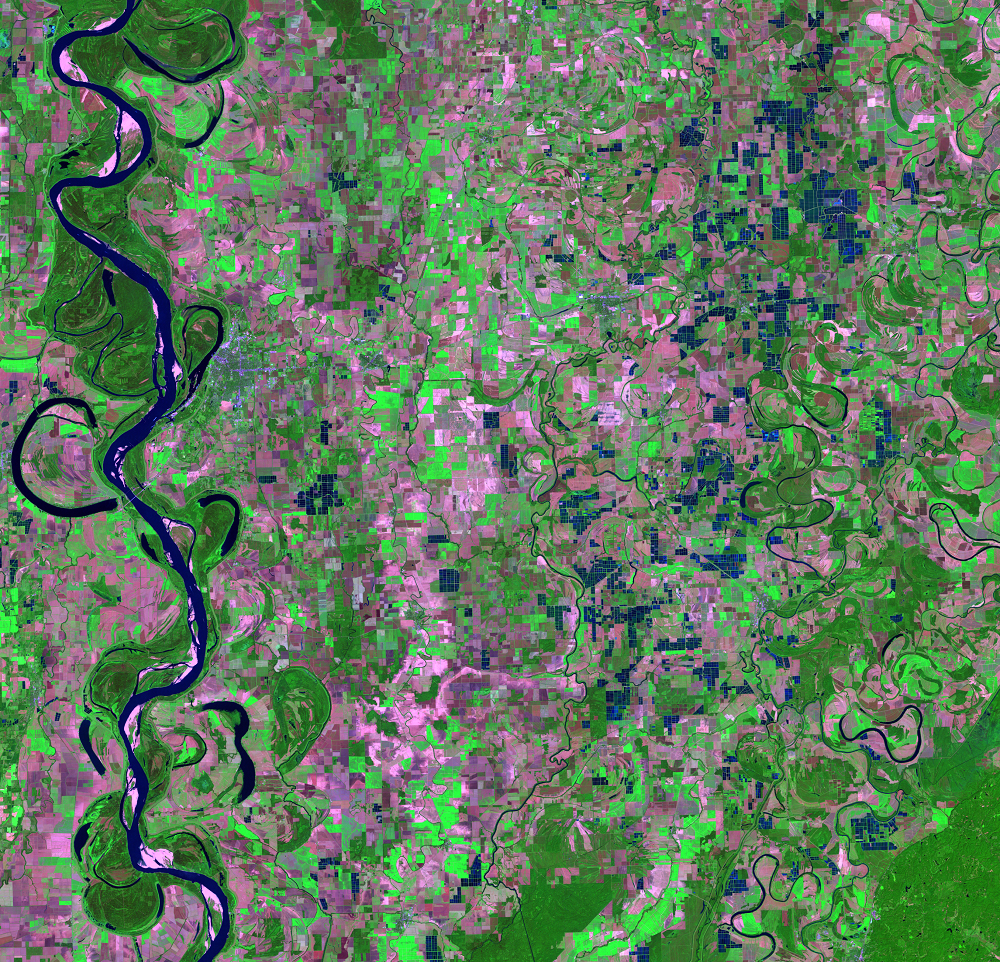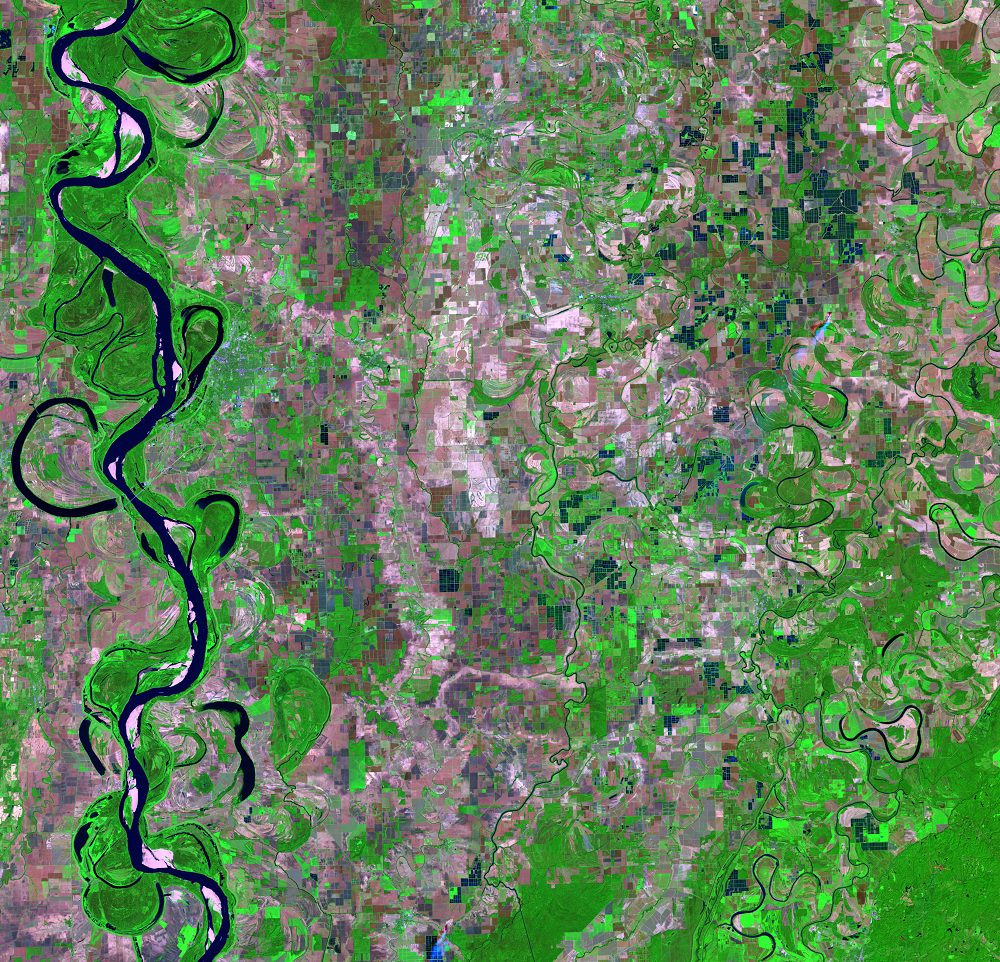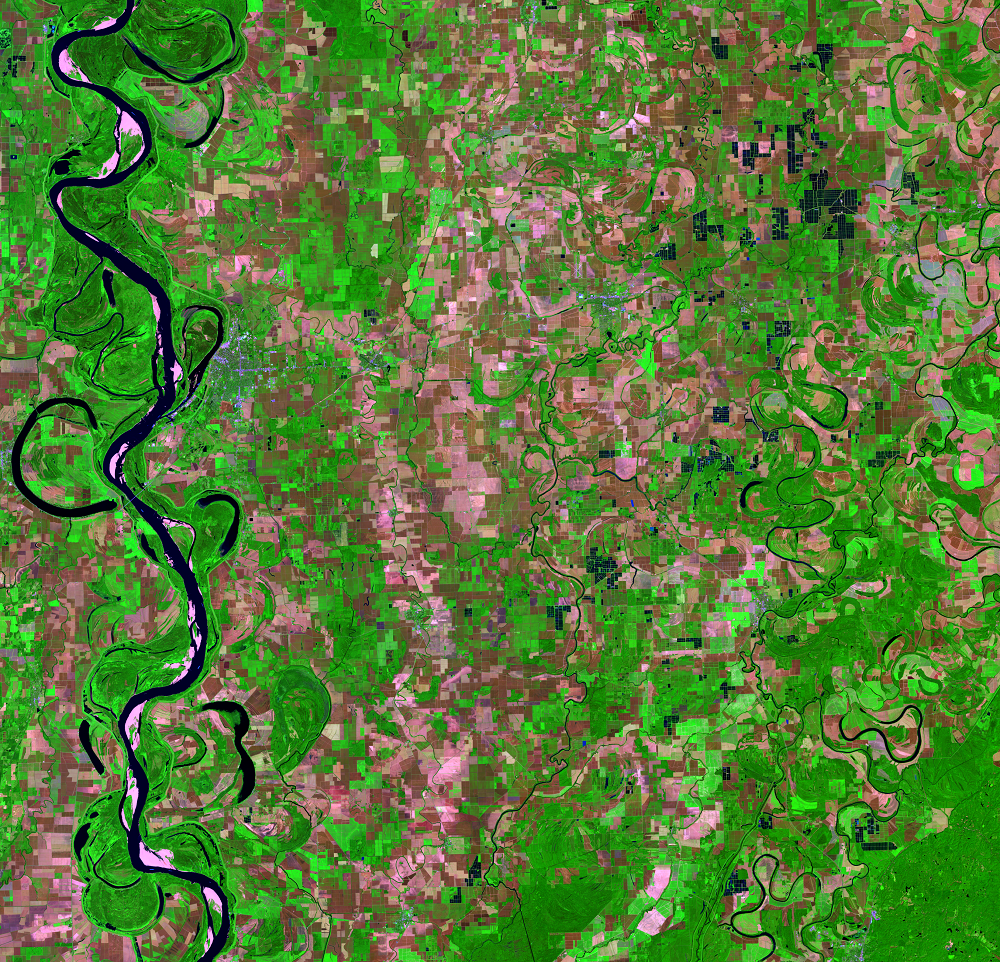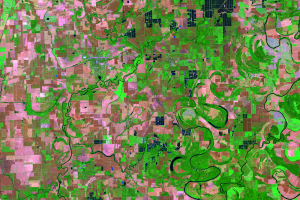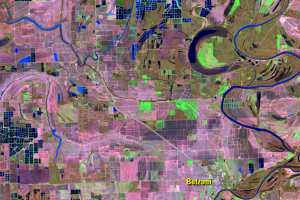
Catfish Farms, Mississippi, USA
Earth Resources Observation and Science (EROS) Center - Earthshots
Farming doesn’t always mean tilling the ground for crops. In the flat valley along the Mississippi River, in a distinctive region of northwestern Mississippi referred to as “the Delta,” rich soils do support agriculture. But the flat land and abundant groundwater are also suited to aquaculture. Aquaculture simply means cultivating aquatic plants or fish for food. In this part of Mississippi, it means catfish farming.
Catfish are raised in Arkansas and Alabama, but Mississippi has led the nation in catfish production since the 1980s. The farm-raised catfish eat high-protein food pellets made of soybeans, corn, wheat, vitamins, and minerals. The pellets float on top of the water, so the fish don’t eat like wild bottom-feeding catfish do. The result is healthier fish with a cleaner, milder taste.
The Mississippi River meanders down the left side of these Landsat images. Green indicates vegetation: Bright green shapes are cropland, and darker green shades are forests. Surface water is dark blue. Besides the Mississippi, other streams and oxbow lakes are scattered across the region. The catfish ponds are the distinctive blue squares and rectangles among the cropland. The washed-out pink areas are harvested fields.
Imagery
Downloads
Auch, R.F., Wellington, D.F., Taylor, J.L., Stehman, S.V., Tollerud, H.J., Brown, J.F., Loveland, T.R., Pengra, B.W., Horton, J.A., Zhu, Z., Midekisa, A.A., Sayler, K.L., Xian, G., Barber, C.P., Reker, R.R., 2022, Conterminous United States Land-Cover Change (1985–2016)—New Insights from Annual Time Series: Land, v. 11, no. 2, https://doi.org/10.3390/land11020298.
Engle, C.R., Hanson, T., and Kumar, G., 2021, Economic history of U.S. catfish farming—Lessons for growth and development of aquaculture: Aquaculture Economics & Management, v. 26, no. 1, p. 1–35, https://doi.org/10.1080/13657305.2021.1896606.
Hegde, S., Kumar, G., Engle, C., Hanson, T., Roy, L.A., Cheatham, M., Avery, J., Aarattuthodiyil, S., van Senten, J., Johnson, J., Wise, D., Dahl, S., Dorman, L., and Peterman, M., 2022, Technological progress in the US catfish industry: Journal of the World Aquaculture Society, https://doi.org/10.1111/jwas.12877.
Kumar, G., Engle, C., Hegde, S., van Senten, J., 2020, Economics of U.S. catfish farming practices—Profitability, economics of size, and liquidity: Journal of the World Aquaculture Society, v. 51, p. 829–846, https://doi.org/10.1111/jwas.12717.
Mississippi State University Extension, 2022, Catfish: Mississippi State University, accessed March 15, 2022, at http://extension.msstate.edu/agriculture/catfish.
Soergel, A., 2018, The Catfishing of America: U.S. News and World Report, accessed March 15, 2022, at https://www.usnews.com/news/healthiest-communities/articles/2018-04-17/mississippi-catfish-industry-swamped-by-imports-regulations.
The Catfish Institute, [n.d.], Farming and Processing, The Catfish Institute website, accessed March 22, 2022 at https://www.uscatfish.com/farming-and-processing.
USDA, 2021, CropScape—Cropland Data Layer: USDA National Agricultural Statistics Service, accessed March 15, 2022, at https://nassgeodata.gmu.edu/CropScape/.

